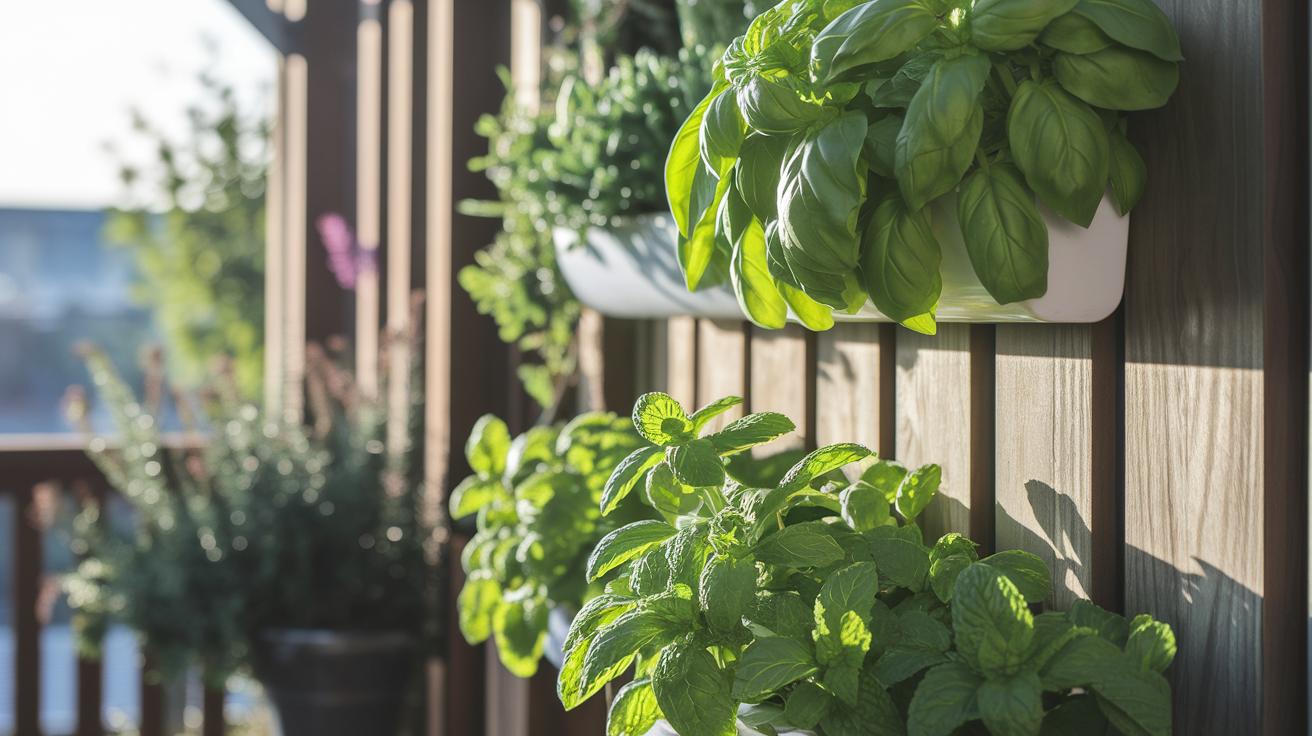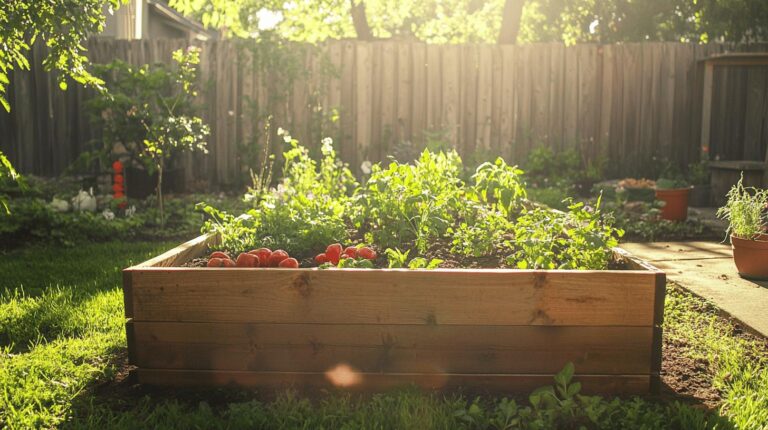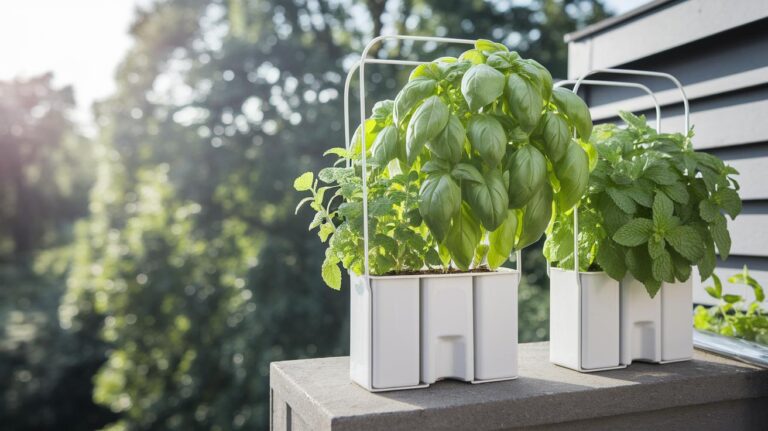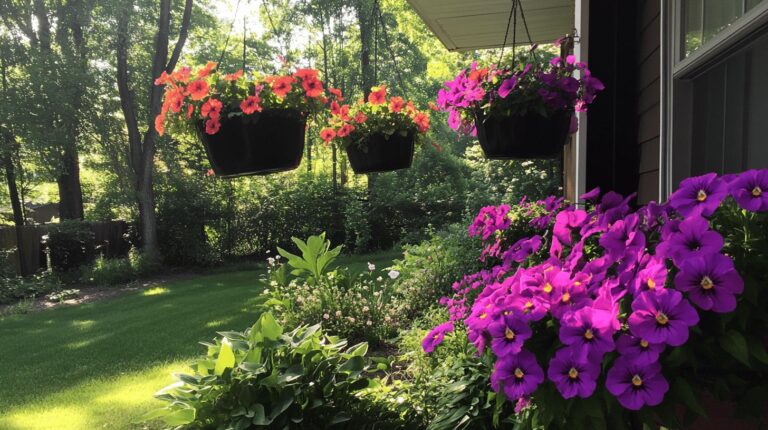Self Watering Vertical Herb Garden: Effortless Fresh Herbs
Have you ever sprinkled mint on your omelet and breathed in a burst of cool morning air? Imagine that same fresh scent greeting you every day.
You can grow basil, mint, and parsley in a self-watering vertical herb garden. It has a bottom reservoir (a little water tank) and a cotton wicking cord (a rope that draws water up). Your herbs just sip moisture all week, you know?
No more lugging a heavy watering can or forgetting to water while you’re away. Your leafy greens stay plump and full of flavor even when you’re on vacation.
I’ll show you how to build one on your balcony or fence, step by step, for an easy, hands-off herb feast. By the way, my cat loves to lounge on my herb wall (my little garden guard!).
How Self Watering Vertical Herb Gardens Provide Effortless Herb Cultivation
Have you ever smelled fresh basil on a morning breeze? A self watering vertical herb garden stacks or hangs pots on a wall so you can tuck basil, mint, and parsley into just a few square feet. It’s a neat, budget-friendly way to grow your own greens. And seeing your herbs at eye level feels like chatting with a friend over the garden fence.
Here’s how it works. A water reservoir (a bottom tank) holds water and a rope wick (a cotton cord) pulls moisture up into each pot. Think of the wick like a straw feeding the soil (the crumbly top layer of earth) so your herbs sip just what they need. It's passive irrigation – no pumps, no timers, and no drowned roots.
These gardens pretty much water themselves. You skip the heavy watering can and, um, the daily check-ins. More air can flow around each pot, keeping your herbs fresh and pest-free. Pick the style that fits your balcony, deck, or backyard fence and you’re set.
Now you get to spend time tasting fresh herbs instead of hauling water. Consistent moisture makes leaves plump with flavor, even in hot afternoon sun. No fuss – just simple reservoir refills and hands-off harvests. Oops, did I mention how good homemade pesto can taste?
Step-by-Step Setup for a DIY Self Watering Vertical Herb Garden
What You’ll Need
- a 4×8-foot vinyl lattice panel (grid-like plastic panel for climbing plants) – about $21
- nine lightweight self-watering hanging planters (pots with rope wicks that pull up water) – under $23 for the set
- a bottom reservoir container (a plastic tote or bucket to hold water)
- Command picture hanging strips (sticky strips you can remove without damage)
- vinyl siding clips (hooks that grip the panel to siding)
- a handful of small screws (for extra hold, if you want)
Tools:
- drill with level attachment (so your panel hangs straight)
- tape measure
- pencil for marking
These simple supplies keep it renter-friendly and almost drill-free. Inspired by small space vertical herb garden ideas: https://www.backyardsuperstar.com/?p=848
How to Put It Together
First, pick a sunny wall or fence. Feel that morning sun on your herbs, so uplifting, right?
Use the level and pencil to mark where the lattice will go. Peel and press the Command strips onto the back corners of the panel. Clip on the vinyl siding hooks. No cords. No fuss. Just a snug hold.
Stand the panel upright and press it firmly against the wall for thirty seconds. Give it a solid push so each hook sticks. If you want extra peace of mind, add a few screws into a stud or wooden post. Oops, spilled some potting mix there, no worries.
Next, set your reservoir container at the base. Thread each planter’s rope wick through its drainage hole so it dips into the water. Hang the planters about sixteen inches apart. That spacing lets air flow and makes it easy to trim your herbs later.
Fill each pot with light potting mix (soil that drains well) and tuck in your favorite herbs. Have you ever smelled fresh basil on a morning breeze? Pour water into the reservoir until the wicks are soaked. In a few minutes, moisture will climb into the soil. It’s like watching a slow, steady rain from the inside out.
In about an hour, using just basic tools and your level, you’ve got a self-watering herb tower. Ready for you to pluck chives, basil, and more all season long. Wow.
Top Self Watering Planter Designs for Vertical Herb Gardens
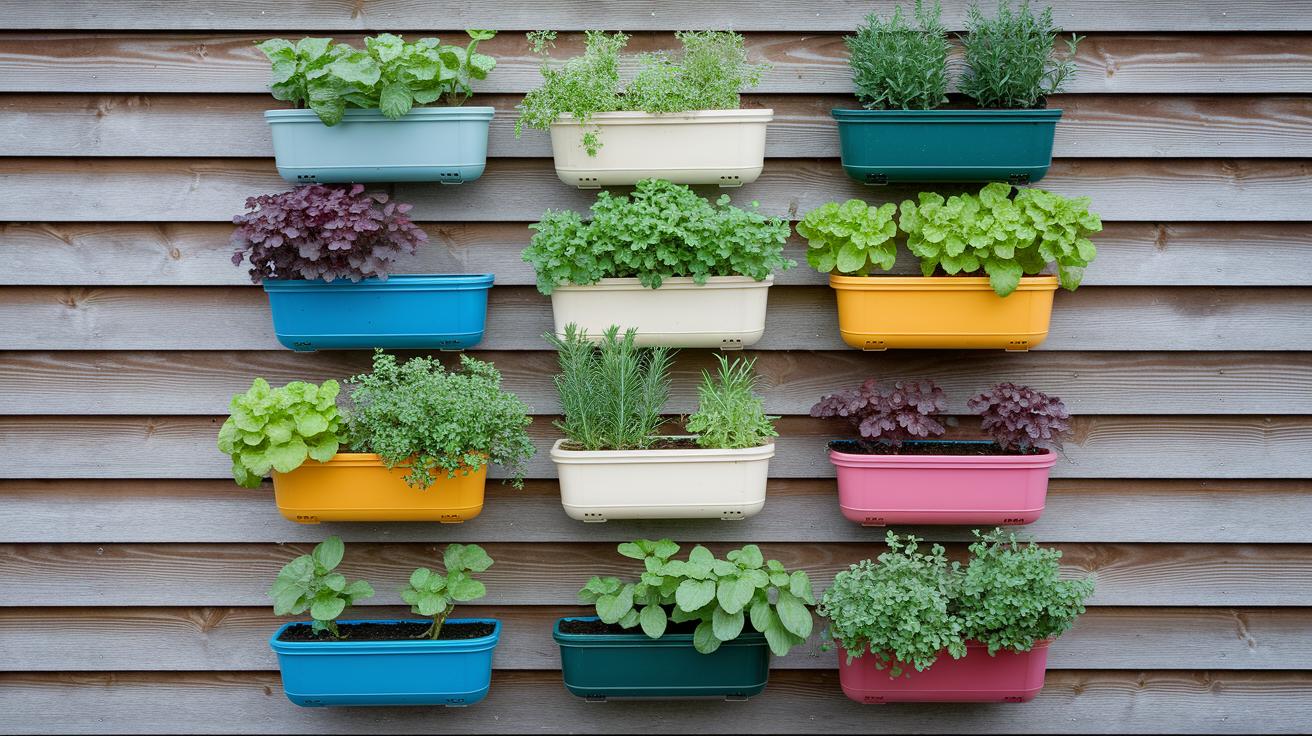
If you’ve got a bare wall or a narrow balcony, self watering planters can turn it into a fresh herb haven. These planters hold extra water in a hidden reservoir so your herbs sip moisture as they need it. I’m sharing my favorite styles, each one brings a unique vibe and keeps thirsty plants happy.
-
Upcycled Container Walls
I adore using old jeans (sturdy cotton cloth you wear) or painted wooden crates lined with plastic sheeting to keep soil from spilling. These upcycled (reused items given new life) planters hold water below the soil so your herbs drink at just the right pace. Plus they add a pop of personality, oops, sometimes I spill a bit of potting mix when filling them. -
PET Bottle Towers
Grab clear plastic bottles, cut them in half, and flip them upside down on wood shelves. Wrap each bottle with jute net (rough natural fiber cloth) for a cozy look and light shade. Fill the reservoir bottom and watch water slowly seep up to thirsty roots. It’s almost like magic. -
Vinyl Lattice Hangs
A simple white lattice grid makes a sleek herb tower you can clip lightweight pots onto, no drilling holes needed. Each pot sits snugly and draws water from a tray at the bottom. Have you ever felt that crisp snap of fresh parsley? This setup shows it off. -
Felt Pocket Planters
Think of a fabric wall hanging with pockets made of felt (soft, thick cloth). You water once every two days and the pockets hold soil snugly, sharing moisture with each plant. They mount with a few screws, look low-profile, and make watering feel like a quick sprinkle. -
Pallet or Ladder Frames
Old wood pallets or an A-frame ladder become charming freestanding or wall-mounted herb towers. Just add shelves, drop in pots, and tuck a water tank under the bottom shelf. Your pots will draw up water like little straws, genius for busy days. -
Terra Cotta Pot Sculpture
Arrange clay pots on a wooden frame at playful angles so they look like a living art piece. Each pot gets its own tiny drip feeder from a hidden reservoir. When basil leaves brush your fingertips, you’ll know the drip system is working. -
Modular Stackable Towers
These plastic modules snap together like building blocks and channel overflow water from top to bottom. It’s a gutter-based herb tower design that you can build tall or keep low. I love how easy it is to add another layer of green.
Planting now sets you up for a summer harvest. Pick the look that matches your style, rustic charm, sleek lines, or playful pocket walls, and let your herbs soak up the sun.
Choosing the Right Herbs and Planting Strategies for Self Watering Vertical Herb Gardens
When you’re picking herbs for your vertical garden, start with hardy, easy-grow favorites you know you’ll love. Try rosemary (woody shrub with needle-like leaves that release a piney scent), basil (sweet green leaves that taste a bit peppery), oregano (spicy Mediterranean herb), parsley (bright, fresh-tasting leaves), chives (slender shoots with mild onion flavor), mint (cool, fragrant leaves), and cilantro (flat leaves with a citrusy zing). Have you ever smelled basil warmed by the sun? It’s pure magic. For more ideas, see best herbs for vertical herb garden.
Give each pot about 16 inches of elbow room so roots and leaves can stretch out without crowding. In a 4×8 panel you’ll fit six to nine pots. That spacing makes harvesting a breeze and keeps your herbs healthy.
Companion planting (growing two plants together so they help each other) brings out flavor and keeps pests away. Basil and oregano share the same sun and water needs and actually shield each other from bugs. Parsley and chives are another easygoing pair. By the way, mint can take over if you’re not careful, pop it in its own pot.
Put the sun lovers near the top so every leaf gets its daily dose of light. Then swap herbs as the seasons change: sow chives in spring, start basil after the last frost, and tuck mint in once the days heat up. This way, your garden stays fresh and you’ll have a steady supply of snip-ready greens all season.
Maintenance and Troubleshooting for Your Self Watering Vertical Herb Garden
Routine Maintenance Tasks
Check the top inch of soil (about a finger deep) every morning. If it feels dry, fill the reservoir (water tank) so your herbs can sip all day! You know, like giving a thirsty plant its morning drink, right?
If you’re using a timer, set it to run the wick (cloth rope that delivers water) for one minute at 7 am and again at 7 pm. Sometimes I forget and set mine for 6:59, oops.
Once a week, empty the tank and wipe it clean. Cover it with a board or opaque lid (no clear plastic) to keep out light and stop algae (green plant gunk) from growing. By the way, my cat loves napping on that lid.
Inspect each wick every few days. Gently tug to make sure it’s still drawing water up and tuck it back in snug if it feels loose.
Every month, lift out the felt liners and fluff the soil (dirt mixed with compost) so air can reach the roots. Think of it like stirring pancake batter to keep things light. Then add a splash of balanced, water-soluble fertilizer (liquid plant food) at half strength, just once a month to avoid nutrient burn.
Troubleshooting Common Issues
Green Slime and Clogged Wicks
Spot any green slime floating on the water or clinging to the tank walls? Drain the water, scrub the tank with a brush, rinse it well, and snap the cover back on. That light block is your best defense against algae.
If a wick or drainage hole jams up, pull the wick out and soak it in warm water for about ten minutes. Then use a thin stick or pipe cleaner to clear any soil bits. Pop the wick back in so it sits snug and watch it soak up water again.
Too Much Water and Soggy Roots
When herbs look droopy or yellow, they might be waterlogged. Lift the liner and let the soil dry out for a day. Then tuck in a fresh strip of cloth or twist a few inches of coarse sand into the pot to help water flow through.
Go back to checking that top inch of soil, you’ll get a feel for when your garden needs a drink. And if your timer seems too generous, cut each wick cycle to 30 seconds or skip one now and then until the soil feels damp, not soggy.
Buying Guide: Best Commercial Self Watering Vertical Herb Garden Kits
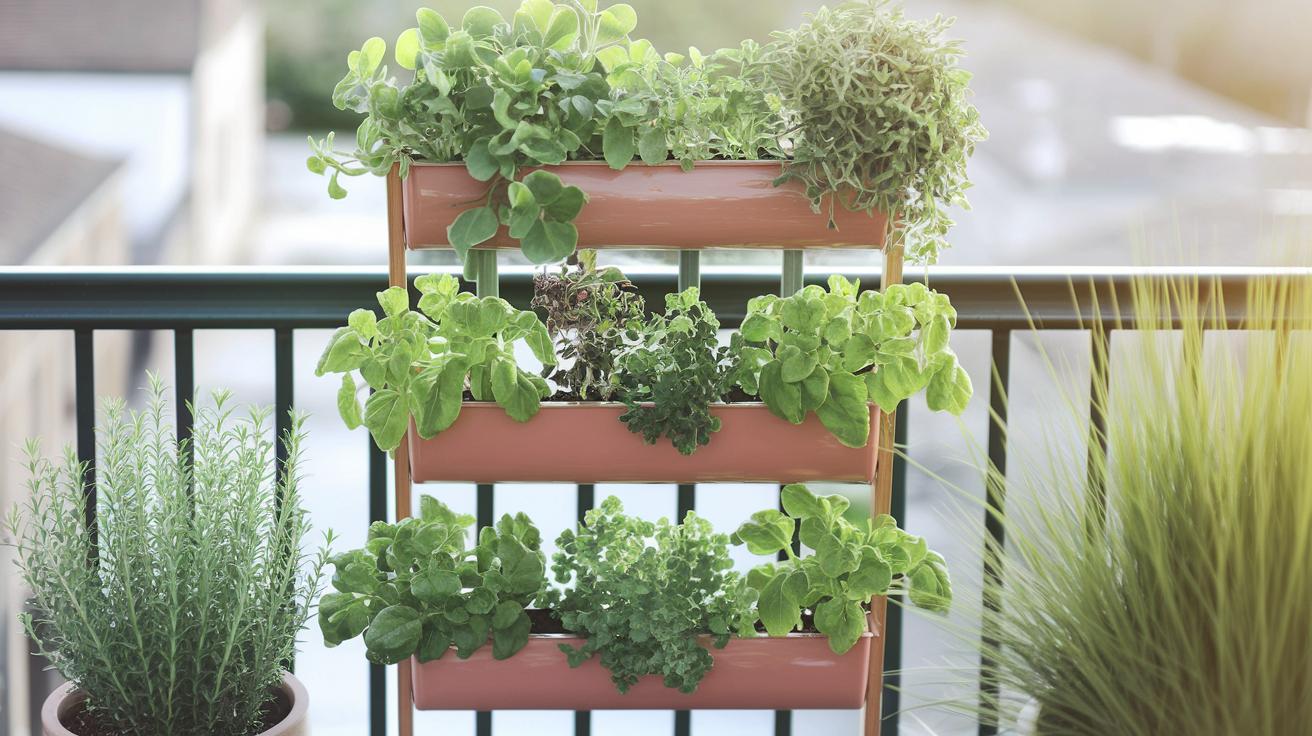
Thinking of brightening your balcony, kitchen wall, or sunroom with fresh herbs? A ready-to-go kit can save you hours of measuring, drilling, and fiddling. I’ve pulled together three popular picks that fit different budgets and spaces.
Self-Watering Hanging Pots Set
Nine little pots hang on rope wicks (cords that soak up water) from sturdy metal hooks. Just pour water into the bottom tray (shallow catchment container) and let the moisture climb up to thirsty roots. Easy, right?
Vinyl Lattice Panel Kit
This one snaps onto a 4×8 foot board with no-drill clips (clips that grip without screws). You get a neat grid holding nine lightweight planters (pots with open bottoms). Slide them out when you need to rearrange or refill.
Small Wall-Mounted Planter Boxes
Four slim boxes clip right to your wall. Each has a plastic liner (thin insert to hold soil) and costs under ten bucks. Perfect if you rent or have a tiny nook that needs a fresh touch.
| Kit Name | Price | Capacity | Key Features |
|---|---|---|---|
| Self-Watering Hanging Pots Set | $22.99 | 9 Pots | Rope wicks (water cords), sturdy hooks, underpot tray (water catcher) |
| Vinyl Lattice Panel Kit | $21.00 | 9 Planters | No-drill siding clips, lightweight grid, removable pots |
| Small Wall-Mounted Planter Boxes | $9.50 | 4 Boxes | Modular clip-on boxes, slim profile, plastic liners |
Use this table as your quick cheat sheet. Looking for a compact indoor setup? One of these top-rated indoor herb towers will give you spill-free harvests. Craving a bolder outdoor display? The vinyl lattice panel brings your herbs right to eye level. On a tight budget? Those small wall-mounted boxes prove tiny can still deliver fresh basil, rosemary, and parsley. Match your budget and wall type. Then get planting, your watering chores will almost vanish. Oops, I forgot to add that good soil makes all the difference!
Final Words
We jumped right into how a self watering vertical herb garden brings effortless herb growing, laying out basic setup steps and clever planter ideas.
We chose top herbs, matched them for year-round harvest, and ran through simple maintenance to keep wicks flowing.
We even compared commercial kits so you can pick a setup that fits your porch and pocket.
With this guide in hand, your own lush herb wall is just a few easy steps away, happy gardening!
FAQ
Do self-watering pots work for herbs?
Self-watering pots work well for herbs by providing consistent moisture via a reservoir and wick system, reducing watering frequency and preventing over- or under-watering for healthier, bushier plants.
Can you grow herbs in a vertical garden?
You can grow herbs in a vertical garden by using stacked or wall-mounted planters filled with light potting mix, ensuring good drainage, proper sunlight, and regular feeding for strong, compact growth.
What is the best way to irrigate a vertical garden?
The best way to irrigate a vertical garden uses a passive reservoir with wicks to draw water up into the soil, maintaining steady moisture, cutting watering chores, and preventing root rot.
What are the disadvantages of self-watering plants?
Disadvantages of self-watering plants include risk of algae growth in the reservoir, potential clogs in wicks, and periodic checks needed to prevent over-saturation and nutrient imbalances.
How do you build a DIY self-watering vertical herb garden?
You build a DIY self-watering vertical herb garden by mounting a sturdy panel or rack, attaching hanging planters with rope wicks, filling the bottom reservoir, and planting herbs in well-draining soil.
Where can I find the best self-watering vertical herb garden kits?
You can find top self-watering vertical herb garden kits online at garden retailers and home improvement stores, comparing reviews for durability, size, reservoir capacity, and installation ease before buying.
Can I set up a self-watering vertical herb garden indoors or outdoors?
You can set up a self-watering vertical herb garden indoors using grow lights and humidity control, or outdoors on patios and balconies with frost-protected reservoirs and sun-shielding as needed.
What are self-watering planters?
Self-watering planters are containers with built-in water reservoirs and wicking systems that draw moisture up into the soil as needed, reducing manual watering and keeping roots consistently hydrated.
What is a GreenStalk Vertical Planter?
A GreenStalk Vertical Planter is a stacked, modular system of rotating tiers that creates vertical growing space with self-watering features, air-pruned roots, and easy access for planting and harvesting.

